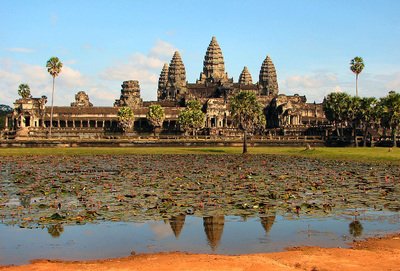Volcanoes of Indonesia: A Traveler’s Guide to Active Volcanoes
Indonesia, an archipelago of over 17,000 islands, is home to more than 130 active volcanoes, making it the most volcanically active country on Earth. Sitting atop the Pacific Ring of Fire—a volatile tectonic zone where several plates collide—Indonesia’s landscape is shaped by powerful geological forces. While these volcanoes have caused massive destruction in the past, they also offer some of the most awe-inspiring landscapes and unique travel experiences in the world.
For adventurous travelers, exploring Indonesia’s active volcanoes provides a rare opportunity to witness the raw power of nature. From smoking craters to surreal acid lakes, every volcano tells a different story. In this guide, we’ll explore some of the most iconic active volcanoes in Indonesia, what makes them special, how to visit them safely, and what travelers should know before embarking on a volcanic adventure.
1. Mount Bromo – East Java
Mount Bromo is one of the most popular and accessible volcanoes in Indonesia. Located in the Bromo Tengger Semeru National Park, this active volcano is famous for its ethereal beauty and stunning sunrises. Tourists typically trek or drive to the nearby viewpoint at Mount Penanjakan in the early hours to watch the sunrise over Bromo’s crater, with Mount Semeru puffing in the background.
Despite being relatively small (2,329 meters), Mount Bromo continuously emits white sulfur smoke and offers a surreal lunar-like landscape. You can walk across the Sea of Sand, a vast volcanic plain, to reach the staircase that leads to the crater’s rim.
Best Time to Visit: April to October (dry season)
Travel Tip: Dress warmly. The early morning temperatures can be surprisingly cold.
2. Mount Ijen – East Java
Located near the eastern tip of Java, Mount Ijen is renowned for its turquoise acid crater lake and the rare phenomenon of blue fire—sulfuric gases igniting into electric blue flames in the darkness. This phenomenon can only be seen at night, so most treks to Ijen begin around midnight.
The crater lake is one of the most acidic natural bodies of water in the world, and its vibrant color is both mesmerizing and dangerous. The mountain is also home to traditional sulfur miners who carry heavy loads from the crater floor, providing a glimpse into one of the world’s most grueling jobs.
Best Time to Visit: Dry season (May to September)
Travel Tip: Wear a gas mask when descending into the crater due to the toxic sulfur fumes.
3. Mount Merapi – Central Java
Mount Merapi, meaning “Mountain of Fire,” is Indonesia’s most active and dangerous volcano. Located near the cultural city of Yogyakarta, Merapi has erupted frequently in recent decades, with significant eruptions as recent as 2010 and 2021.
Despite the risks, Merapi attracts thrill-seekers eager to witness its raw power. Guided treks to the summit or viewpoints are available, and the surrounding areas, including Kaliadem, offer fascinating volcanic landscapes shaped by past eruptions.
Best Time to Visit: May to October
Travel Tip: Always check volcanic activity updates before planning your visit. Some areas may be restricted during heightened alert levels.
4. Mount Rinjani – Lombok
Towering at 3,726 meters, Mount Rinjani is Indonesia’s second-highest volcano and offers one of the most challenging and rewarding treks in Southeast Asia. The multi-day hike includes camping under the stars and visiting the Segara Anak, a stunning crater lake with its own baby volcano, Mount Barujari, rising from the center.
The trek is demanding, involving steep climbs and long descents, but the views from the summit are unforgettable—panoramic vistas of Lombok, Bali, and even Sumbawa on clear days.
Best Time to Visit: April to December (avoid rainy season)
Travel Tip: Be physically prepared and choose a reputable trekking company with experienced guides.
5. Mount Agung – Bali
Mount Agung is Bali’s highest peak and spiritual center. Standing at 3,031 meters, it is considered sacred by the Balinese and is home to the island’s largest temple, Pura Besakih, located on its slopes. Mount Agung erupted as recently as 2019, and while it’s currently relatively calm, it remains under close observation.
Treks to the summit typically start around midnight to reach the top for sunrise. The view from the summit—looking over the clouds with the ocean in the distance—is a spiritual experience for many.
Best Time to Visit: Dry season (May to October)
Travel Tip: Respect local customs. Some parts of the mountain are off-limits during religious ceremonies.
6. Mount Sinabung – North Sumatra
Mount Sinabung was dormant for centuries until it unexpectedly erupted in 2010. Since then, it has experienced numerous eruptions, often spewing ash clouds and pyroclastic flows. Located in North Sumatra, Sinabung is less frequented by tourists due to its volatility, but it draws photographers and scientists from around the world.
Villages near the base have been evacuated multiple times, and some areas remain within the danger zone. While summit climbs are not permitted due to safety concerns, visitors can observe the volcano from designated safe zones.
Best Time to Visit: When volcanic activity is low and local authorities permit access.
Travel Tip: Always travel with a guide familiar with the latest safety protocols.
7. Mount Krakatoa – Sunda Strait
One of the most famous volcanoes in history, Krakatoa (Krakatau) is infamous for its catastrophic eruption in 1883, which triggered tsunamis and caused global climate effects. Today, its “child,” Anak Krakatau (Child of Krakatoa), continues to grow and erupt.
Located between Java and Sumatra, Anak Krakatau can be visited via boat tours from coastal towns like Carita or Lampung. While landings on the island are sometimes restricted, boat tours offer close-up views of the smoldering cone and eruptions.
Best Time to Visit: May to September
Travel Tip: Due to its volatility, tours can be canceled on short notice. Always book with experienced operators.
Travel Tips for Visiting Active Volcanoes in Indonesia
- Check Volcanic Activity Alerts
The Indonesian Center for Volcanology (PVMBG) issues regular updates on volcanic activity. Always check their status reports before traveling to or hiking a volcano. - Hire Local Guides
Navigating volcanoes can be dangerous without experience. Local guides know the safest routes and up-to-date conditions. - Pack Proper Gear
Essentials include sturdy hiking boots, warm layers, rain protection, headlamps, gas masks (especially for Ijen), and plenty of water. - Respect Nature and Culture
Many volcanoes in Indonesia are sacred. Follow local customs, avoid restricted areas, and always leave no trace. - Have Travel Insurance
In case of sudden volcanic activity or accidents, comprehensive travel insurance is highly recommended.
Conclusion
Indonesia’s active volcanoes are a fascinating blend of danger, beauty, and cultural significance. From the blue flames of Mount Ijen to the sacred slopes of Mount Agung, each volcano offers a different adventure and perspective on the power of the Earth. For travelers seeking more than just a scenic view, these fiery giants provide the chance to witness nature in its most dramatic form—a journey where the earth breathes beneath your feet.
Whether you’re a seasoned trekker or a curious explorer, Indonesia’s volcanoes promise unforgettable experiences—as long as you prepare wisely and travel safely.


